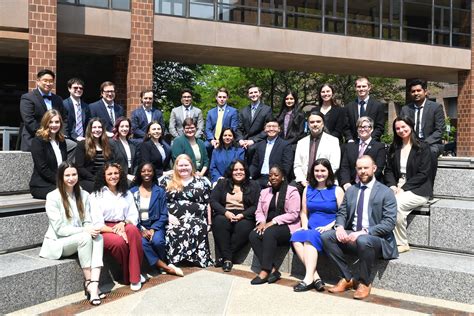
Tom Cruise nearly passed out during a complex underwater stunt for the upcoming “Mission: Impossible – Dead Reckoning Part Two,” admitting he “didn’t plan on no air,” highlighting the extreme risks he undertakes for his films.
Tom Cruise, known for his commitment to performing his own stunts, revealed the near-suffocating experience he endured while filming an underwater sequence for the next installment in the “Mission: Impossible” franchise. The incident occurred during a particularly challenging scene, pushing the actor to his physical limits. Cruise’s candid admission sheds light on the meticulous planning and inherent dangers involved in creating the franchise’s signature action set pieces.
Speaking at a Q&A session, Cruise described the intricate preparations and the unexpected challenges he faced. The underwater stunt required him to hold his breath for extended periods while navigating a complex set. “We were underwater doing this scene, and I had to hold my breath for a long time,” Cruise explained. “I didn’t plan on no air coming.”
The actor elaborated on the sequence, detailing the numerous takes required to perfect the shot. Each take involved resetting the scene, ensuring all technical elements were in place, and then executing the stunt with precision. “We were doing take after take,” Cruise said. The repetition, combined with the physical exertion, led to the unexpected situation where he ran out of air.
Despite the inherent risks, Cruise views these stunts as integral to the storytelling process. He believes that performing the action sequences himself allows for a more authentic and immersive experience for the audience. “It’s about entertaining an audience and what I can do to immerse them in the movie,” he stated. “For me, that’s very important.”
The “Mission: Impossible” franchise is renowned for its groundbreaking stunts, often pushing the boundaries of what is considered possible in action filmmaking. Cruise’s dedication to realism and his willingness to take on dangerous challenges have become a hallmark of the series. From scaling the Burj Khalifa in “Mission: Impossible – Ghost Protocol” to clinging to the side of an Airbus A400M in “Mission: Impossible – Rogue Nation,” Cruise has consistently raised the bar for action sequences.
The upcoming “Mission: Impossible – Dead Reckoning Part Two” promises to deliver even more spectacular stunts, including the underwater sequence that nearly cost Cruise dearly. The film is expected to be a culmination of the franchise’s commitment to practical effects and breathtaking action. Cruise’s near-suffocation incident serves as a stark reminder of the risks involved in pushing the limits of cinematic spectacle.
The incident also raises questions about the safety protocols and precautions taken on set. While Cruise is known for his willingness to take risks, it is essential to ensure that all necessary measures are in place to protect the safety of the cast and crew. The incident underscores the need for rigorous planning, thorough training, and constant vigilance when executing dangerous stunts.
Cruise’s passion for filmmaking and his commitment to delivering unparalleled action experiences are undeniable. His willingness to put himself in harm’s way for the sake of entertainment has earned him the respect and admiration of audiences worldwide. However, the near-suffocation incident serves as a cautionary tale, highlighting the fine line between daring spectacle and potentially life-threatening situations.
The “Mission: Impossible” franchise has consistently defied expectations, delivering thrilling action sequences that have captivated audiences for decades. Cruise’s dedication to performing his own stunts has been a key factor in the franchise’s success. His willingness to take risks and push the boundaries of what is possible has made him one of the most iconic action stars in cinema history.
As audiences eagerly anticipate the release of “Mission: Impossible – Dead Reckoning Part Two,” the near-suffocation incident serves as a reminder of the sacrifices and challenges involved in creating such high-octane entertainment. Cruise’s commitment to realism and his willingness to push himself to the limit have made the “Mission: Impossible” franchise a cinematic phenomenon.
The film industry has long been fascinated by the use of stunts, and Cruise has become a pioneer in pushing the envelope. His dedication to practical effects and his insistence on performing his own stunts have set a new standard for action filmmaking. While the risks are undeniable, Cruise believes that the rewards are worth it, as long as the audience is entertained and immersed in the story.
The “Mission: Impossible” franchise has also been instrumental in showcasing the evolution of stunt work. From the early days of rudimentary effects to the sophisticated techniques used today, the franchise has consistently pushed the boundaries of what is possible. Cruise’s involvement has been a driving force in this evolution, as he has continually sought to raise the bar for action sequences.
The underwater stunt that nearly resulted in Cruise’s suffocation is just one example of the many challenges and risks involved in creating the “Mission: Impossible” films. The franchise has become synonymous with daring action, and Cruise’s willingness to take on these challenges has made him a legendary figure in the world of cinema.
The incident also highlights the importance of teamwork and collaboration in filmmaking. The execution of complex stunts requires the coordination of numerous individuals, including stunt coordinators, safety personnel, and technical experts. The success of these sequences depends on the ability of the team to work together seamlessly and to ensure that all necessary precautions are taken.
Cruise’s near-suffocation incident serves as a reminder of the inherent risks involved in filmmaking and the importance of prioritizing safety on set. While the pursuit of entertainment is a noble goal, it should never come at the expense of the well-being of the cast and crew. The incident underscores the need for constant vigilance and a commitment to ensuring that all necessary precautions are taken to protect the safety of everyone involved.
The “Mission: Impossible” franchise has consistently delivered thrilling action sequences that have captivated audiences worldwide. Cruise’s dedication to performing his own stunts has been a key factor in the franchise’s success. His willingness to take risks and push the boundaries of what is possible has made him one of the most iconic action stars in cinema history.
As audiences eagerly anticipate the release of “Mission: Impossible – Dead Reckoning Part Two,” the near-suffocation incident serves as a reminder of the sacrifices and challenges involved in creating such high-octane entertainment. Cruise’s commitment to realism and his willingness to push himself to the limit have made the “Mission: Impossible” franchise a cinematic phenomenon.
The incident during filming highlights the fine balance between achieving spectacular cinematic moments and ensuring the safety of everyone involved. It serves as a talking point not just for the “Mission: Impossible” franchise, but for the entire film industry where stunts are a key ingredient.
Cruise’s dedication extends beyond simply performing the stunts. He is heavily involved in the planning and preparation, working closely with stunt coordinators and other experts to ensure that the sequences are both thrilling and safe. This hands-on approach has earned him the respect of his peers and has contributed to the high level of realism that characterizes the “Mission: Impossible” films.
The underwater stunt, which went awry, involved a complex sequence of movements and maneuvers that required Cruise to hold his breath for an extended period. The actor explained that he had not anticipated the lack of air during the repeated takes, highlighting the unpredictable nature of filmmaking and the importance of being prepared for unexpected challenges.
Despite the near-suffocation incident, Cruise remains committed to performing his own stunts and to pushing the boundaries of what is possible in action filmmaking. His dedication and passion are evident in every film he makes, and he continues to inspire audiences with his daring and commitment to excellence.
The “Mission: Impossible” franchise has become a benchmark for action films, setting a new standard for realism and spectacle. Cruise’s involvement has been instrumental in this success, and he continues to be a driving force in the evolution of stunt work. As audiences eagerly await the release of “Mission: Impossible – Dead Reckoning Part Two,” they can be assured that they will be treated to another thrilling and unforgettable cinematic experience.
The incident raises important questions about the ethical considerations involved in stunt work. While audiences are entertained by the daring feats of actors like Cruise, it is important to recognize the risks involved and to ensure that all necessary precautions are taken to protect their safety. The film industry has a responsibility to prioritize the well-being of its performers and to ensure that they are not put in undue danger for the sake of entertainment.
Cruise’s near-suffocation incident serves as a reminder of the challenges and sacrifices involved in filmmaking. While the final product may appear seamless and effortless, it is the result of countless hours of hard work, dedication, and risk-taking. The actors and crew who work on these films deserve our respect and admiration for their commitment to creating unforgettable cinematic experiences.
The “Mission: Impossible” franchise has had a significant impact on the film industry, influencing the way action films are made and raising the bar for realism and spectacle. Cruise’s involvement has been a key factor in this success, and he continues to be a driving force in the evolution of stunt work. As audiences eagerly await the release of “Mission: Impossible – Dead Reckoning Part Two,” they can be assured that they will be treated to another thrilling and unforgettable cinematic experience.
The underwater stunt, which nearly resulted in Cruise’s suffocation, highlights the importance of meticulous planning and preparation in filmmaking. The execution of complex stunts requires the coordination of numerous individuals, including stunt coordinators, safety personnel, and technical experts. The success of these sequences depends on the ability of the team to work together seamlessly and to ensure that all necessary precautions are taken.
The “Mission: Impossible” franchise has consistently delivered thrilling action sequences that have captivated audiences worldwide. Cruise’s dedication to performing his own stunts has been a key factor in the franchise’s success. His willingness to take risks and push the boundaries of what is possible has made him one of the most iconic action stars in cinema history.
As audiences eagerly anticipate the release of “Mission: Impossible – Dead Reckoning Part Two,” the near-suffocation incident serves as a reminder of the sacrifices and challenges involved in creating such high-octane entertainment. Cruise’s commitment to realism and his willingness to push himself to the limit have made the “Mission: Impossible” franchise a cinematic phenomenon. The franchise has become synonymous with daring action, and Cruise’s willingness to take on these challenges has made him a legendary figure in the world of cinema.
The incident also spotlights the advancements in underwater filming technology that allow filmmakers to capture breathtaking sequences while minimizing the risks involved. The use of specialized equipment and techniques has made it possible to create realistic and immersive underwater scenes that were once impossible to achieve. Cruise’s willingness to embrace these technologies has contributed to the success of the “Mission: Impossible” franchise and has helped to push the boundaries of cinematic storytelling.
FAQ
-
What happened to Tom Cruise during the filming of “Mission: Impossible – Dead Reckoning Part Two?”
Tom Cruise nearly suffocated during an underwater stunt for the film. He admitted that he “didn’t plan on no air coming” while performing a complex sequence that required him to hold his breath for an extended period during multiple takes.
-
Why does Tom Cruise perform his own stunts?
Cruise believes that performing his own stunts allows for a more authentic and immersive experience for the audience. He feels it’s important to entertain the audience by immersing them in the movie. He is dedicated to realism and wants to push the boundaries of what is possible in action filmmaking.
-
What safety measures are in place for Tom Cruise’s stunts?
While the article doesn’t detail specific safety measures, it implies that rigorous planning, thorough training, and constant vigilance are necessary when executing dangerous stunts. The incident underscores the need for comprehensive safety protocols to protect the cast and crew, even when experienced professionals like Cruise are involved.
-
What is the “Mission: Impossible” franchise known for?
The “Mission: Impossible” franchise is renowned for its groundbreaking and death-defying stunts, often pushing the boundaries of what is considered possible in action filmmaking. Cruise’s dedication to realism and his willingness to take on dangerous challenges have become a hallmark of the series.
-
What does the near-suffocation incident reveal about filmmaking and stunt work?
The incident highlights the inherent risks involved in filmmaking and the importance of prioritizing safety on set. It serves as a reminder of the challenges and sacrifices involved in creating high-octane entertainment and underscores the need for constant vigilance and a commitment to ensuring that all necessary precautions are taken to protect the safety of everyone involved. It also shows that even with meticulous planning, unexpected challenges can arise, requiring adaptability and quick thinking from the entire team.









